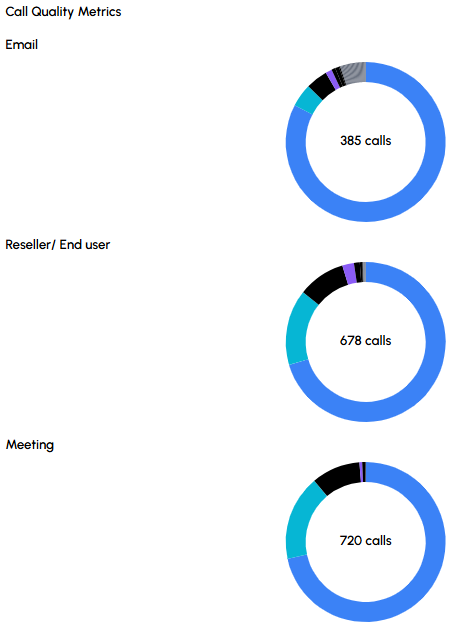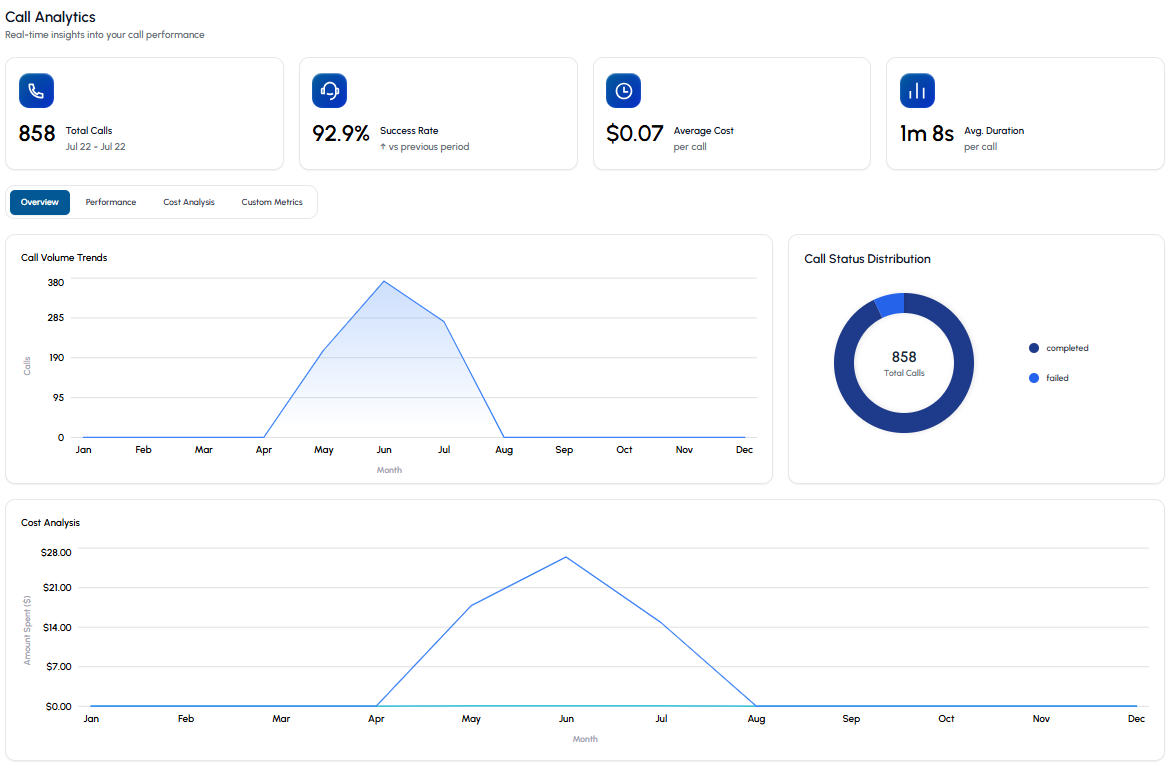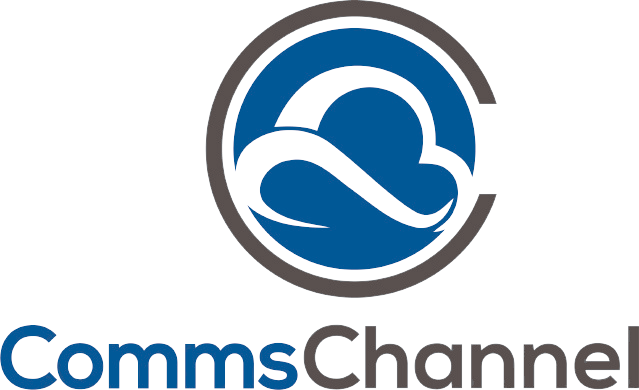CommsChannel - For all your telco needs
From Data to Decisions: Measuring AI Voice Agent Impact
A CommsChannel Guide for Businesses and Resellers

AI-powered phone agents are transforming how businesses communicate – handling calls, capturing leads, answering questions, and booking meetings, all with natural language and real-time responsiveness. But just like any part of your operations, what gets measured gets improved.
At CommsChannel, we believe tracking your AI agent’s performance is essential not just for making sure things are running smoothly, but for proving ROI, uncovering customer insights, and continuously improving the customer experience. Whether you’re using AI Voice to support your own business or reselling it under your brand, the metrics you monitor can drive better decisions, smarter automation, and stronger results.
Here’s how to measure your AI phone agent’s performance using the comprehensive analytics available in the CommsChannel dashboard.
Key Metrics That Matter
Within your call analytics dashboard, you can view detailed call stats, quality scores, sentiment analysis, and cost insights. The system allows for flexible filtering — by time range, end customer or reseller, vertical, application, product, area of interest, and more. These filters give you complete visibility across all AI conversations so you can drill into what matters most.
Here are three critical data categories to focus on:
1. Call History Stats
Understand usage and engagement patterns with top-level stats such as:
- Total Calls: A measure of activity and adoption
- Average Duration: Insight into how long callers typically interact with the AI agent
- Completion Rate: Shows how often calls run their natural course versus being dropped or terminated early
This data helps you understand peak activity, agent utilisation, and overall call volumes – useful when benchmarking performance over time or comparing campaigns.
2. Call Quality Metrics
Beyond the surface, analysing call quality reveals the effectiveness of your AI agent’s conversation design. Some valuable metrics include:
- Voicemail Left: Indicates how many unanswered calls resulted in an AI-generated voicemail being successfully dropped
- Call Disposition: Tracks outcomes such as lead captured, appointment booked, callback scheduled, or no outcome
- Call Sentiment: Uses natural language processing to assess whether the caller’s tone was positive, negative, or neutral

These insights help assess how well the AI agent is handling different call types and where improvements might be needed – such as adjusting prompts, handling objections, or fine-tuning follow-up workflows.
Custom metrics available in the dashboard also include: voicemail left, call disposition, call sentiment, analysis metadata, email, reseller or end user, meeting, vertical, application, product, area of interest, call summary, disconnect reason, and more.
3. Cost Analysis
If you’re using AI Voice across large volumes or reselling it to customers, cost tracking is essential. The dashboard breaks it down into:
- Total Cost: Cumulative cost of AI call activity over a defined period
- Average Cost Per Call: Helpful for understanding efficiency
- Cost Per Minute: A useful benchmark when comparing across call types or customers
This is particularly valuable for resellers who need clear cost attribution per customer or application, and for businesses who want to optimise call scripts to reduce average handling time.
Strategies on How to Measure AI Performance
To extract real value from these insights, it’s important to adopt a performance review rhythm and tie analytics back to business goals.
Here are some proven strategies:

- Set benchmarks before launch: Define baseline numbers for total calls, average duration, and cost per call so you can measure growth and efficiency improvements.
- Review sentiment and disposition weekly: Identify patterns in negative sentiment or low conversion dispositions. This can highlight areas where scripts or voice models need training.
- Use filters to segment performance: Break down data by vertical, product, or end customer. What works for one segment may not work for another, and tailoring conversations accordingly can boost success rates.
- Identify high-value outcomes: Tag calls that result in bookings, qualified leads, or conversions. This allows you to track performance not just by volume, but by value delivered.
- Map cost against outcomes: If you’re spending more on longer calls but they lead to better results, that’s a worthwhile investment. If not, it’s a cue to optimise.
Final Thoughts
An AI phone agent is only as good as the insights you have into its performance. With CommsChannel’s AI Voice dashboard, you’re equipped with powerful analytics to assess every stage of the call journey – from first hello to final outcome.
Whether you’re using AI Voice to streamline your own operations or offering it as a white-labelled product to your customers, data-driven decision making is what turns automation into a competitive advantage.
Explore AI Voice in more detail at commschannel.com/ai-voice or speak to our team to learn how to optimise your AI deployment for results.
Explore Our Solutions

CommsCRM
CommsCRM is your ultimate all-in-one PBX and CRM platform, designed to simplify your business operations, enhance communication, and boost customer engagement. Whether you’re a small business or an enterprise, CommsCRM offers the tools you need to connect, manage, and grow—all in one powerful solution.

AI Voice with Australian SIP Trunking
Enhance customer interactions with our advanced conversational AI voice engineering, delivering natural, dynamic dialogues. Seamlessly integrated with Australian SIP trunking, robust carrier networks, and secure number hosting, we ensure crystal-clear connectivity.

